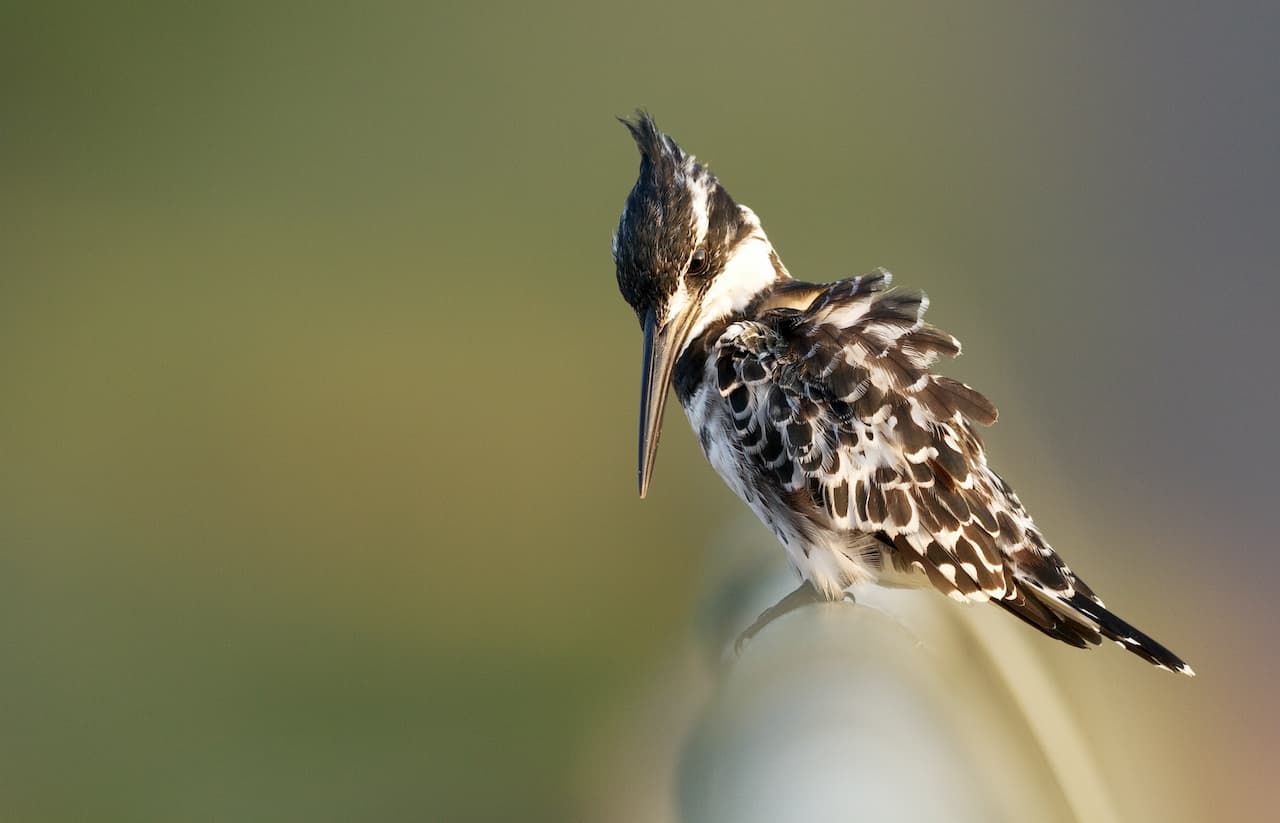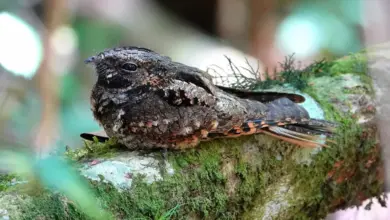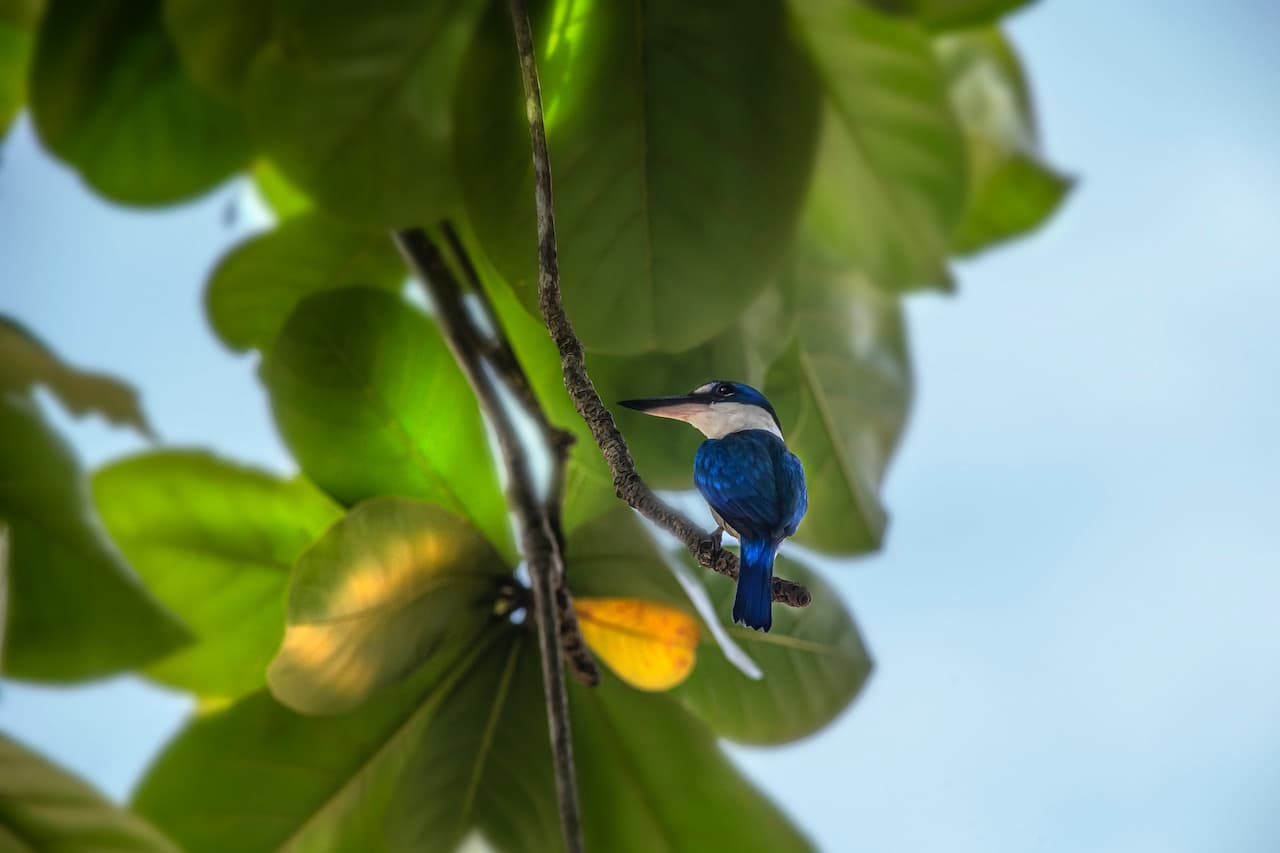Seychelles Kestrels
The Seychelles Kestrel (Falco araea) is a small bird of prey belonging to the genus Falco in the falcon family, Falconidae. It is endemic to the Seychelles Islands where it is the only breeding bird of prey. It is known in Seychellois Creole as the Katiti after its loud, shrill call.
Description
It is the smallest of the kestrels, 18–23 cm long with a wingspan of 40–45 cm. The wings are fairly short and rounded.
The adult male’s upperparts are reddish brown with black spots while the underparts are unspotted and buff. The head and rump are dark blue-grey. The tail is blue-grey with black bars. The bill is dark and the feet and cere are yellow.
Females are similar to the males in appearance but are a little larger and paler.
Immature birds have a brown, streaked head, spots on the breast, and a buff tip to the tail.
Ecology
It can be seen in forests, scrub, and farmland and around rock faces and houses. It rarely hovers, instead feeding by sitting on an exposed perch and waiting for prey to pass, then swooping down to catch it. Lizards, particularly green day geckos (Phelsuma) and skinks (Mabuya) make up 92% of its diet and it will also take small birds, frogs, rats, and insects.
The breeding territory covers just 40 hectares, the smallest of any bird of prey. Breeding occurs from August to October. The nest site is on a cliff, tree, or building. It is a simple scrape with no nest material used. Two or three eggs are laid; they are white with brown markings and are incubated for 28–31 days. The young birds fledge after 35–42 days and then remain with their parents for another 14 weeks.
Conservation
The species has a population of about 800 birds and is classified as Vulnerable. Lowland nests have a high failure rate of about 70-80%. It was probably bred throughout the granitic central Seychelles in the past but is currently known to breed only on Mahé, Silhouette, North Island, Praslin, and some small adjacent islands. It was reintroduced to Praslin in 1977.
Threats are thought to include habitat loss due to logging, housing development, and fires as well as predation and competition by introduced species. Rats, cats, and Barn Owls have reduced the lizard population on which the kestrels depend and they may take eggs and chicks. Barn Owls and Common Mynas have occupied many suitable nest sites.
Persecution by humans is now rare. In the past, kestrels were killed because they were thought to take chickens and because they were considered to be an omen of death.
Research conducted by Dr Jim Groombridge (Royal Society Research Grant):
Searching for evidence of a historical population bottleneck in the Seychelles kestrel: microsatellite genotyping of 100-140-year-old museum specimens.
The Mauritius kestrel is believed to have experienced a population bottleneck of a single pair in 1974. Dr. Groombridge’s previous genetic work (Groombridge et al. Nature 2000) showed current microsatellite diversity in this species to be low, compared to unusually high ancestral levels sampled from pre-bottleneck museum skins. A broader survey of current diversity in other kestrels showed the Seychelles kestrel population to be similarly impoverished, but historical records suggest that this species did not undergo a bottleneck of similar severity.
The Seychelles population did not require intensive recovery, and today persists in high numbers. This scenario presents an opportunity to investigate the genetic effects of historical population bottlenecks for island endemics: both kestrel species have similarly low genetic diversity today, but differ in their histories of population size. Geographically, Mauritius is a single large island, whereas the Seychelles archipelago is made up of many smaller islands, which comprise the ancestral range of the Seychelles kestrel. In addition, our knowledge of the evolutionary history of kestrel colonization across the Indian Ocean islands is based upon a molecular phylogeny (Groombridge et al. Mol. Phylog. Evol. 2002).
This current research project at the University of Kent involves the use of microsatellite markers to genotype DNA extracted from sampled museum specimens and to compare those levels of genetic diversity to that retained by the current population in Seychelles. The genetic work is being carried out partly at DICE, University of Kent, and partly at the NERC Sheffield Molecular Genetics Facility, University of Sheffield. Museum collections throughout the UK, Europe, and elsewhere are being used.
Source: DICE – University of Kent






